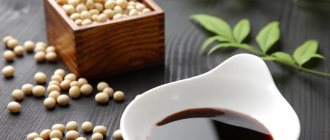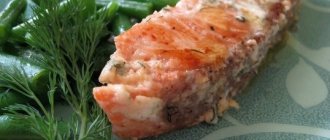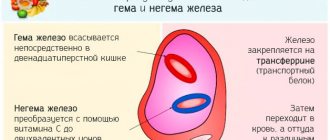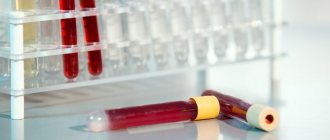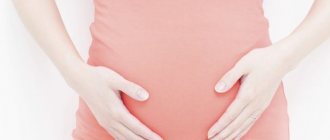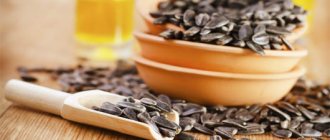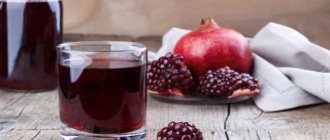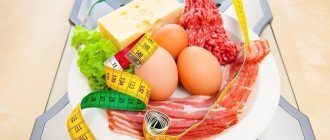Factors influencing hemoglobin
The main hemoglobin is iron. It is through the process of its oxidation and reduction that oxygen is transported and absorbed in the tissues of a living organism.
Iron deficiency is one of the most common causes of a sharp decrease in hemoglobin levels.
However, simply including iron-rich foods in your diet is not enough. This microelement cannot be fully absorbed without certain factors. For example, to break it down into derivative atoms (which then react with certain groups of proteins), vitamin C, B vitamins (especially folic acid), omega-3 and omega-6 unsaturated fatty acids are needed.
At the same time, there are a number of factors that reduce the bioavailability of iron. For example, a high level of calcium in the body inhibits the production of new hemoglobin molecules. If there is a deficiency of the above microelements, iron simply will not be absorbed.
It is also worth considering that a decrease in hemoglobin levels can be provoked by a whole range of diseases of the cardiovascular system and gastrointestinal tract. That is why you should not delay going to the doctor - it is better to immediately establish the cause of hemoglobin deficiency and eliminate this particular factor.
If a low hemoglobin level is caused by a deficiency of micronutrients, then it is recommended to include the following foods in the diet:
- rich in iron;
- rich in vitamins C, E, B-group;
- rich in amino acids (preferably of animal origin);
- exclude those foods that reduce the bioavailability of iron.
In most cases, the above list of recommendations will be enough to normalize the composition of formed elements in the blood.
List of 20 products to increase it
The body must receive all micronutrients in sufficient quantities, including minerals, vitamins, and metals. All these elements directly or indirectly affect the hematopoietic function, which needs to be stimulated (hemoglobin is produced in the bone marrow, like red blood cells, platelets, and leukocytes). So, here is a list of the 20 most effective products.
Liver
Any liver is useful for hemoglobin. Beef, chicken, pork will do. Moreover, it is particularly rare (rare), since in this case most of the micronutrients are preserved.
The liver contains B-group vitamins, iron (6.9 mg per 100 grams), and iodine - all this helps to increase hemoglobin levels.
Meat
The basis of any meat is a wide range of proteins and essential amino acids, which react with iron, thereby forming hemoglobin molecules.
More effective types of meat in this regard are rabbit, pork, and beef. But, again, the meat should be subjected to minimal heat treatment, ideally steamed.
Buckwheat
Almost all grains reduce the bioavailability of iron. The only exception is buckwheat, which acts exactly the opposite.
In addition, buckwheat also contains iron (almost 7 mg per 100 grams of kernels). That is why it is recommended to use it primarily as complementary food for infants, and not semolina (which contains calcium and, thereby, slows down the production of hemoglobin).
Halva
Halva contains a large amount of iron - almost 30 mg per 100 grams of product (and tahini contains even more - up to 50 mg per 100 grams). That is, 50 grams of such dessert provide the daily requirement of iron in the body.
But it’s worth considering that there are practically no B vitamins and ascorbic acid in halva. Therefore, if you include it in the diet, then take care of a sufficient standard of other micronutrients that promote the absorption of iron.
Beet
Contains iron, amino acids, and vitamins that help increase hemoglobin. The peculiarity of table beets is that all micronutrients are retained even during heat treatment.
You can also include beetroot juice in your diet, but you should drink it diluted (1 part juice to 2 parts water).
Pomegranate
Of all the fruits, pomegranate is considered the most beneficial for hemoglobin due to its high content of vitamin B6 .
There is also iron in pomegranate seeds, but in small quantities - only 1 - 1.5 milligrams per 100 grams.
Carrot
To raise hemoglobin, it is better to choose red carrots - they contain the most beta-carotene and vitamin A.
And these microelements help accelerate biochemical reactions using calcium - reducing its “free” level in the blood increases the bioavailability of iron (carrots contain only 0.5 - 0.7 mg per 100 grams).
Dried fruits
The best dried fruits to eat are prunes, raisins, apricots, cherries, cherries, bananas - they contain B vitamins, E, C.
The fact that dried fruits contain a large amount of plant fiber also helps speed up the absorption of iron - this comprehensively normalizes the functioning of the gastrointestinal tract.
Useful video
We suggest watching a video on how to increase hemoglobin levels:
A specially selected balanced diet for low hemoglobin forms the basis of therapy. However, if the levels are extremely low, a medical diet alone will not help correct the situation, and treatment will be based not only on medical nutrition, but also on taking iron supplements prescribed by a doctor.
|
|
| Boiled meat, cereal porridge, 1 fruit, vegetable juice. | |
| Baked fish, vegetable salad, fruit juice. | |
| First course (borscht, fish soup, chicken pea soup), meat cutlets, vegetable salad, berry compote. | |
| A glass of berries or 1 large fruit, rosehip decoction. | |
| Fish cutlets, vegetable casserole, rosehip infusion. | |
| Fresh vegetable salad or 1 unsweetened fruit. |
General nutrition rules
To raise hemoglobin more quickly and effectively, nutritionists recommend following the following tips:
- Keep small meals. You need to eat in small portions, but as often as possible. Optimally – at least 6 times a day.
- Avoid cereals (except buckwheat) and fermented milk products - they all slow down the absorption of iron and interfere with the production of formed elements and hemoglobin.
- Walk in the fresh air as often as possible - a sufficient balance of oxygen in the blood also indirectly stimulates the renewal of hemoglobin molecules and prevents the oxidation and destruction of red blood cells. Ideally, take walks in the fresh air after each meal (this will also help significantly speed up your metabolism).
- Avoid tea and coffee. It is better to give preference to herbal teas, as well as homemade compotes, fruit and vegetable juices.
- Do not eat 2-3 hours before your planned bedtime. Metabolic processes during sleep slow down significantly, so iron and vitamins are practically not absorbed during this period (but the load on the gastric mucosa increases, since the utilization of gastric juice slows down).
Rules for increasing the degree of iron absorption
For patients with a low concentration of iron-containing protein, it is not enough just to know which foods contain a large amount of the necessary element. In order for them to be most effective, there are several recommendations to consider.
The bioavailability of iron can be increased by:
- ascorbic acid, which is found in cauliflower, rose hips and bell peppers;
- copper is by-products, nuts and cereals;
- folic acid – seafood, offal and dried fruits;
- citric and malic acid – citrus fruits, tomatoes and peppers;
- amino acids – meat and fish;
- sugar.
At the same time, the following take part in reducing bioavailability:
- calcium, represented by fermented milk products;
- tannin – strong tea and coffee;
- phytates – bakery products;
- phosphates – preservatives, sweet carbonated drinks and processed cheese;
- soy and milk proteins.
In addition, you need to take into account other factors that interfere with increasing the main component of red blood cells. These include:
- addiction to bad habits;
- influence of stressful situations;
- lack of proper rest;
- spending insufficient time outdoors;
- lack of treatment for the underlying disease;
- incorrect therapy - only a clinician can draw up a list of acceptable products for a particular patient.
Absolutely all of the above components of the diet act as not only effective tools that increase hemoglobin, but also prophylactic agents against problems associated with it. To speed up the process of increasing the content of one of the most important blood elements, you can additionally use vitamin and mineral complexes, as well as nutritional supplements, but this can only be done after the approval of the attending physician.
In the absence of individual contraindications, they can be eaten without restrictions in daily volume, including for children and women during pregnancy.
Source: medanaliz.pro
Features of the diet for certain groups of patients
The nutritional rules for low hemoglobin are somewhat different for different groups of patients. Nutritionists indicate:
- Adults. The iron requirement for adults is about 12 mg per day. It is much easier for adults to digest meat products and animal by-products (liver, lungs, kidneys, heart). It is recommended to include them in the diet daily, at least in minimal quantities.
- Children. The iron requirement for children is from 8 to 11 milligrams per day. Preference should be given to plant products. But you should not overuse milk, especially fatty milk, as it radically reduces the level of hemoglobin and slows down the absorption of iron. It is also recommended to include buckwheat, fish, a small amount of chocolate and halva in the diet.
- Pregnant women. The iron requirement in pregnant women is the highest and reaches 20 mg per day. As a rule, to normalize hemoglobin, they are prescribed specialized vitamin complexes. It is also recommended to eat fish, red caviar, and carrots. But it is better to avoid turmeric, parsley and most other spices that stimulate smooth muscle spasms. The doctor with whom the woman registers must talk about all this in detail.
- Elderly. Their need for iron is the smallest - only 6 - 8 mg per day, which is explained by the natural slowdown in the functionality of the cardiovascular system and bone marrow. Doctors also recommend that older people consume fish, chicken fillet (breast, since there is practically no fat in it), as well as pomegranate and beet juice.
Folk remedies and vitamin complexes
If the inclusion of the above products in the diet does not bring the desired effect, then you can use folk remedies to increase hemoglobin levels. Many of them are extremely effective and are recommended for use even by doctors. The most popular of these methods:
- Dandelion root decoction. Helps normalize the biochemical composition of the blood and accelerate the removal of toxins. To prepare, mix 30 grams of grated fresh dandelion roots with 2 cups of boiling water. Leave for at least 2 hours (until completely cooled). Take 1 teaspoon, diluting it in a glass of water with honey. Take 2 times a day.
- Infusion of rosehip and honey. To prepare, mix 10 grams of dry grated rose hips, 2 tablespoons of honey and a glass of boiling water. Infuse for 30-40 minutes, take as tea 2 times a day. The course is no more than 2 weeks (if longer, there may be excess iron in the body, which also negatively affects health).
- Infusion of St. John's wort, blackberry leaves and chamomile. Mix 1 teaspoon of dry herbal base, add 300 milliliters of water and leave for 2 hours. Take 50 milliliters 3 times a day until hemoglobin levels normalize (but not more than 4 weeks).
If traditional methods of treatment do not bring the desired effect, then drug therapy is prescribed. As a rule, these are multivitamin complexes with a high content of iron, B vitamins, and ascorbic acid. But calcium in such preparations is either completely absent or contained in very small quantities. Popular vitamin complexes of this group:
- Decamevit;
- Aevit;
- Complivit;
- Doppel-Hertz (with iron).
Just check with your doctor for the recommended dosage, as well as the duration of the course of treatment.
How to quickly increase the level of hemoglobin in the blood? Foods that increase hemoglobin
About 25% of the world's population suffers from a lack of hemoglobin in the blood plasma.
Low hemoglobin is one of the main symptoms of iron deficiency anemia. Most often, the pathology is diagnosed in schoolchildren and women of childbearing age. Hemoglobin decreases with poor nutrition, during strict diets, with diseases of the internal organs and as a result of bleeding. Specially selected therapeutic nutrition will help improve your health and increase hemoglobin.
